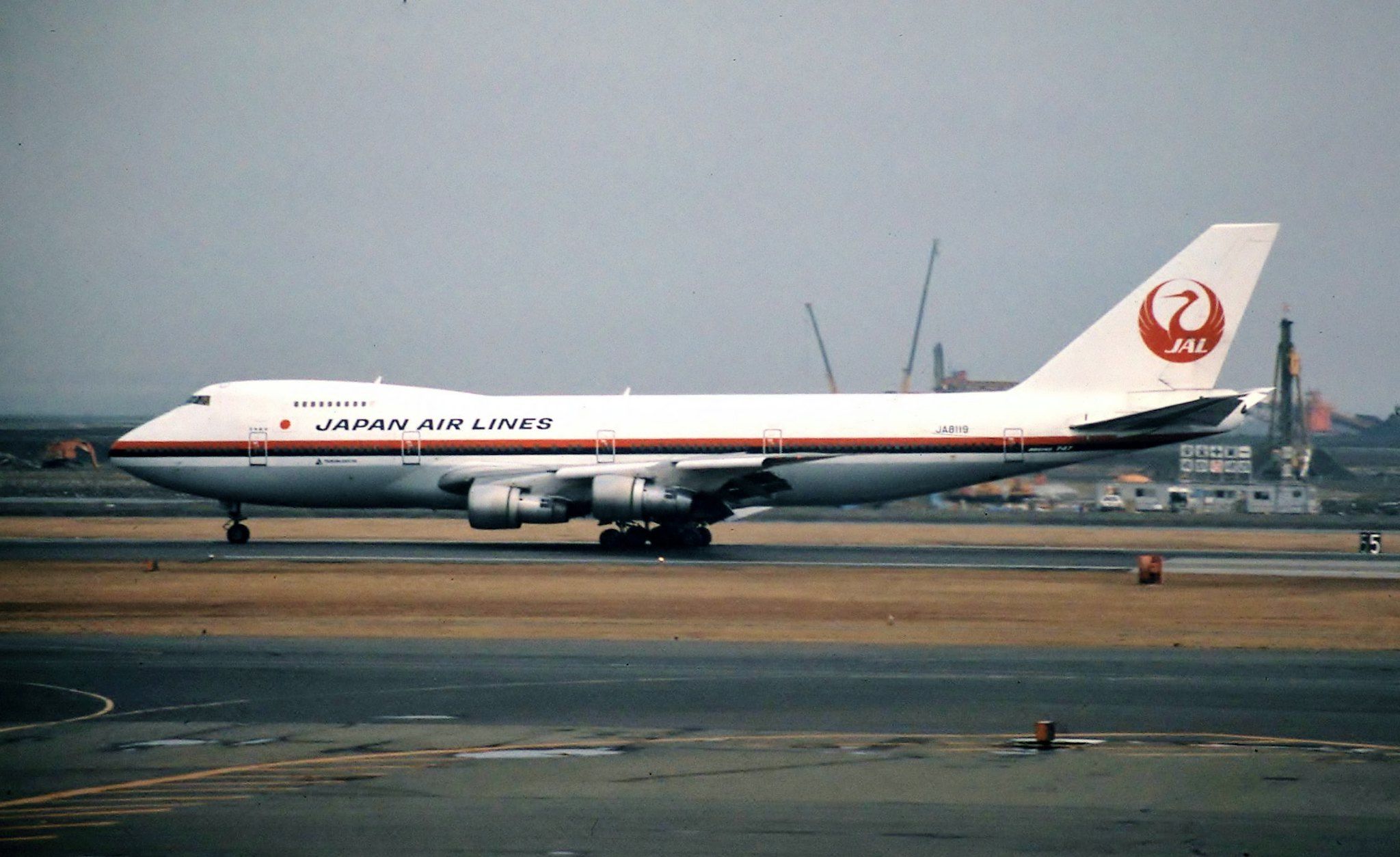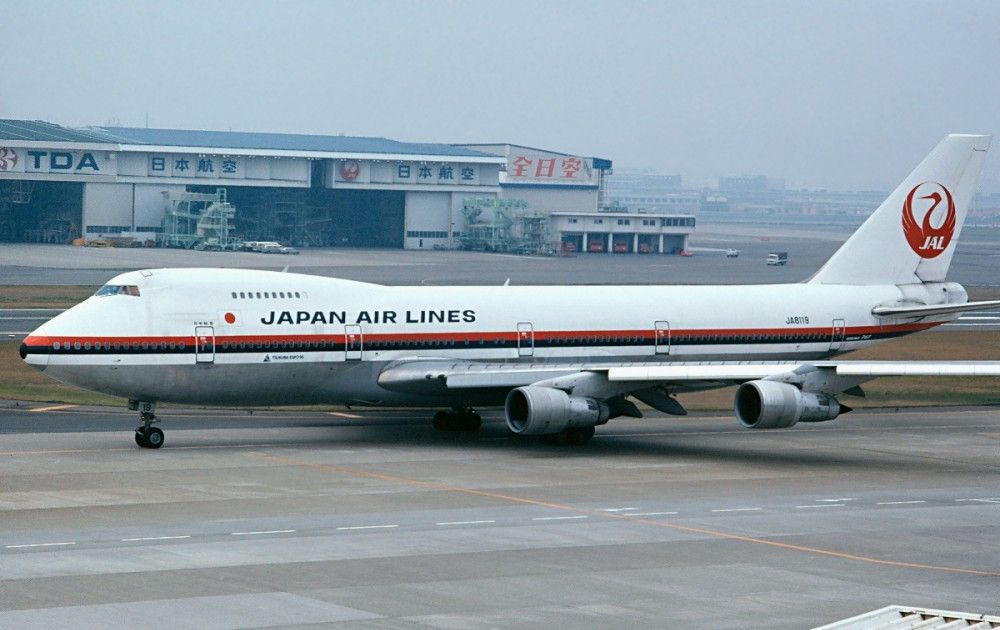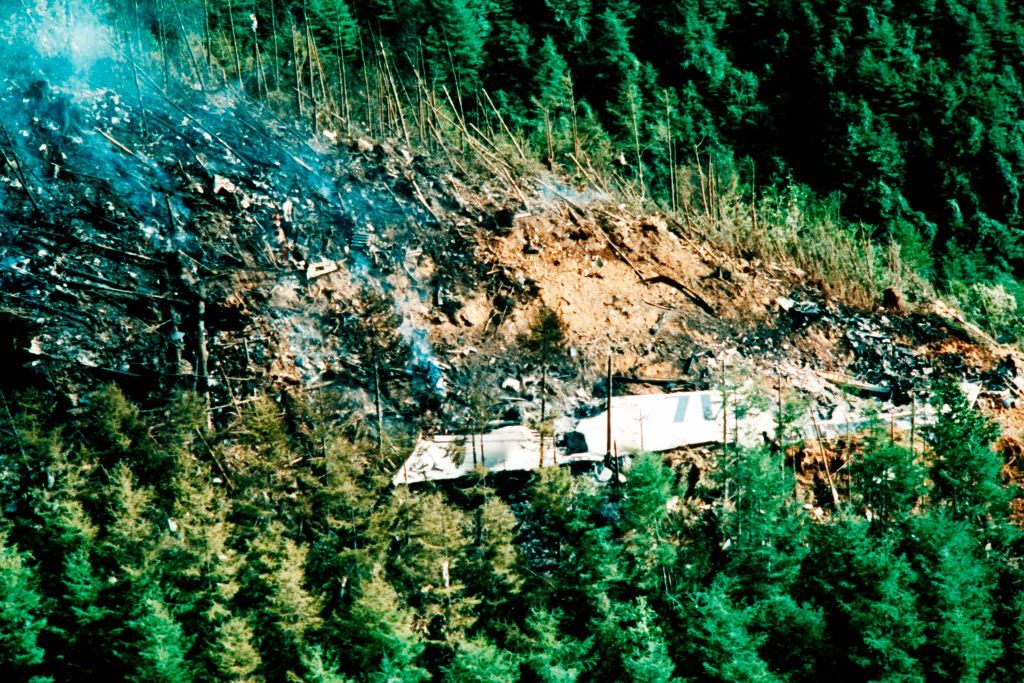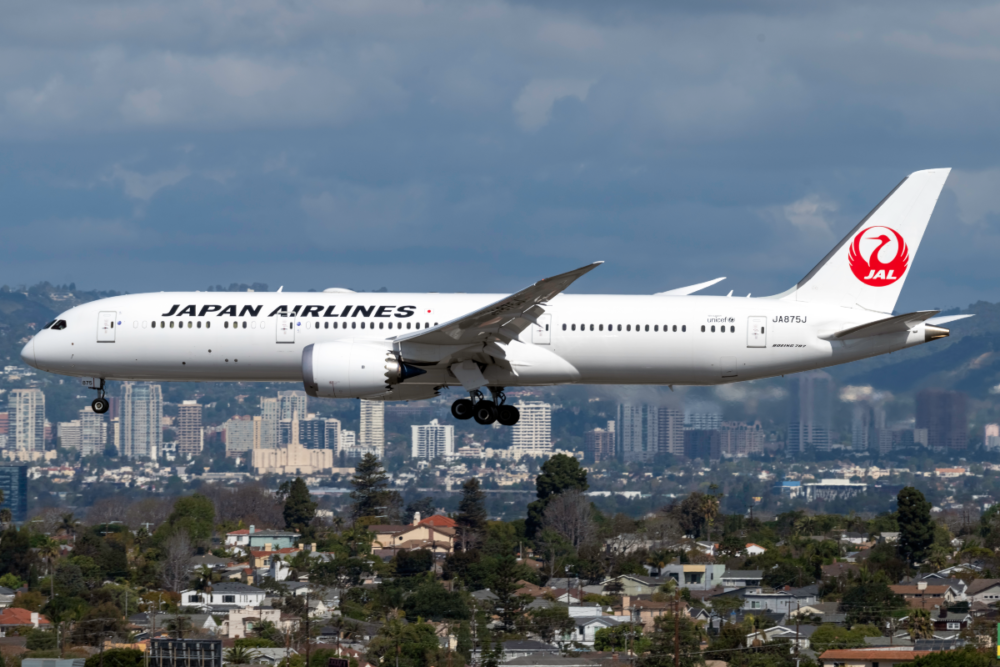The crash of Japan Airlines flight 123 has stayed in the news since the disaster occurred, because, 37 years on, wreckage is still being discovered. The most recent instance of this involved an oxygen mask, which was likely unearthed by Typhoon Hagibis in 2019. Let's take a look at how exactly the accident unfolded.
A busy domestic flight
Japan Airlines flight 123 was a domestic service that originated at Tokyo's Haneda Airport (HND), a facility that remains one of the national carrier's key hubs today. Its destination was Itami Airport (ITM), a domestic hub serving the cities of Kobe, Kyoto, and Osaka. Japan Airlines continues to serve this route today, as does ANA.
The service, which entered the history books in a tragic fashion on August 12th, 1985, was operated by a Boeing 747-100SR. This was a high-density variant of the original 747-100 model, which was specifically designed to operate on Japan's busy domestic corridors. These routes still see widebody service today.
Love aviation history? Discover more of our stories here!
The busy nature of this particular route is evidenced by the fact that, according to the Aviation Safety Network, Japan Airlines flight 123 had 509 passengers onboard. They were accompanied by a 15-person crew, giving a total occupancy of 524 people. The 747-100SR operating the flight was registered as JA8119.
According to data from ATDB.aero, this quadjet was around 11.5 years old at the time, having first entered service with Japan Airlines in February 1974. During this time, it had amassed a total of 25,030 flight hours across 18,835 cycles. These figures combine to make a sector length that averages out at just under 80 minutes, which reflects its usage on short but busy domestic corridors.
Caused by an earlier incident
Just over seven years before the accident, in June 1978, JA8119 suffered a tailstrike while landing at Itami Airport. This damaged the rear of the aircraft's fuselage, as well as its rear pressure bulkhead, forcing it to be sidelined for repairs. However, these repairs were found to have been carried out improperly, resulting in the development of fatigue cracks affecting the rear bulkhead.
The aircraft flew as normal after the repair for several years. However, the cracks eventually meant that the damaged bulkhead could no longer withstand the pressure changes experienced in flight. This ultimately caused the component to fail while JAL flight 123 was climbing through 23,900 feet on August 12th, 1985. The failure of the damaged bulkhead caused an inflight decompression.
Furthermore, this failure also ruptured the component in a manner that caused a five-meter section of the tail, as well as the APU, to be torn away from the jet. Its hydraulic lines were also severed, rendering the plane largely uncontrollable. Photos of the aircraft taken from the ground before it crashed show the vertical stabilizer's absence. Despite this, the 747 remained airborne for over half an hour.
32 minutes of unorthodox flying
All in all, the stricken jumbo jet stayed in the sky for some 32 minutes after the initial structural failure and decompression took place. However, it flew in a rather unorthodox manner, experiencing phenomena such as phugoid oscillations and Dutch rolls. The aircraft eventually ended up flying inland, northwest of Tokyo.
Despite wrestling with their strike aircraft for over half an hour, the crew's luck eventually ran out at 18:56 local time, when its right wing struck a tree-lined ridge near Mount Mikuni, at an altitude of just over 5,000 feet. This prompted it to bank sharply to the right, before the same wing clipped a ditch three seconds later.
This impact is thought to have caused the wider breakup of the aircraft, with the bulk of the wreckage eventually exploding some 500-700 meters to the northwest, close to Mount Takamagahara. Sadly, the crash resulted in the deaths of 520 of the Boeing 747's occupants, with its four survivors all having sat towards the rear.
More than 37 years later, Japan Airlines flight 123 remains the world's deadliest-ever single-aircraft accident today, as well as the deadliest plane crash to have occurred on Japanese soil. Various memorials have been erected in honor of the disaster's 520 victims, with one such example seen in the photograph above.
Source: ATDB.aero, Aviation Safety Network







